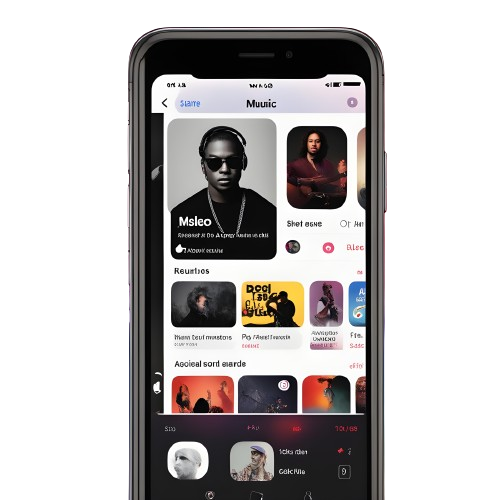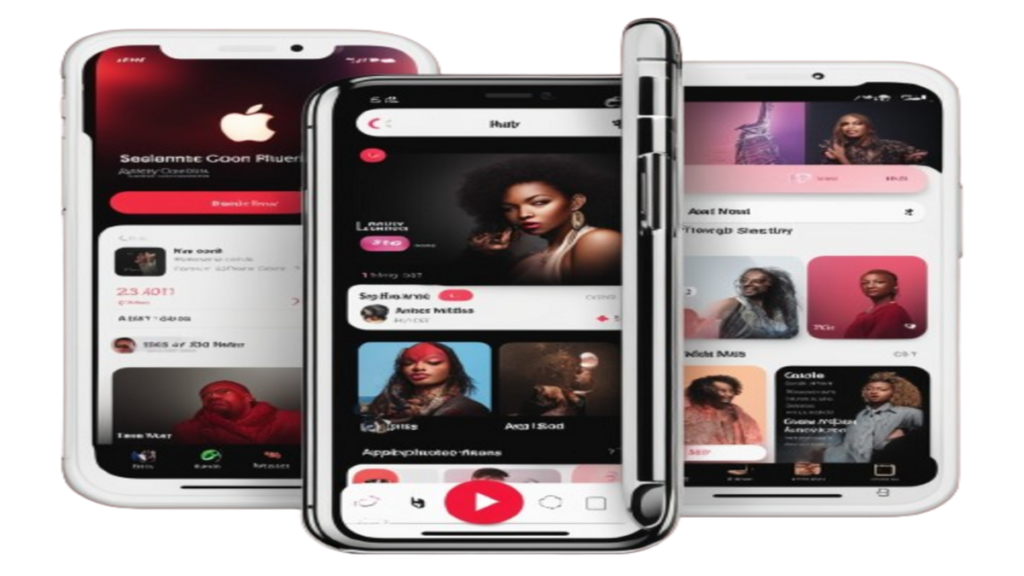The ever-evolving landscape of music consumption, streaming platforms have become integral to how fans access and enjoy music. Apple Music stands out as one of the leading platforms in this realm. Launched by Apple Inc., Apple Music provides users with a vast library of songs, albums, and playlists, allowing them to explore, discover, and enjoy music across various genres and artists.
Definition of Apple Music: Apple Music is a subscription-based music streaming service that offers a wide array of features designed to enhance the listening experience for its users. It provides access to millions of songs, curated playlists, exclusive content, and personalized recommendations.
Importance of music streaming platforms: In today’s digital age, music streaming platforms have revolutionized how people consume music. They offer convenience, accessibility, and affordability, making it easier than ever for fans to explore new music and rediscover old favorites. Apple Music, as one of the major players in the industry, has played a significant role in shaping the way fans interact with music.
Overview of how Apple Music lets fans listen: Apple Music enables fans to listen to their favorite songs and discover new ones anytime, anywhere. With its user-friendly interface, seamless integration across multiple devices and platforms, and vast content library, Apple Music has become a go-to destination for music lovers around the world.
Accessibility and Availability

Apple Music prioritizes accessibility and availability, ensuring that users can enjoy their favorite music seamlessly across various devices and platforms.
Availability on multiple devices: Apple Music is accessible on a wide range of devices, including iPhones, iPads, Mac computers, Apple Watches, and even Android devices. This cross-platform availability ensures that users can access their music library regardless of the device they’re using, providing a consistent and seamless experience across different ecosystems.
Integration with the Apple ecosystem: For users within the Apple ecosystem, such as iPhone, iPad, and Mac users, Apple Music offers deep integration. Users can access their entire music library across all their Apple devices, synchronize playlists and preferences, and seamlessly switch between devices without missing a beat. This integration enhances the overall user experience and convenience for Apple device users.
Offline listening capability: One of the standout features of Apple Music is its ability to download songs and playlists for offline listening. This feature is particularly useful for users who may not always have access to a stable internet connection or prefer to conserve data usage while on the go. By allowing users to download music for offline listening, Apple Music ensures that fans can enjoy their favorite tracks anytime, anywhere, even without an internet connection.
Content Library

The content library is the heart of any music streaming service, and Apple Music boasts an extensive and diverse collection of songs, albums, playlists, and exclusive content.
Extensive music library: Apple Music provides access to millions of songs across various genres, languages, and artists. From mainstream hits to niche tracks, users can explore a wide range of musical styles and discover new favorites within the platform’s vast library. Whether users are into pop, rock, hip-hop, classical, jazz, or any other genre, Apple Music offers something for everyone.
Curated playlists and recommendations: Apple Music goes beyond simply providing access to individual songs and albums. The platform offers curated playlists tailored to different moods, activities, and genres, making it easy for users to discover new music and enjoy personalized recommendations based on their listening habits and preferences. These curated playlists are often updated regularly to keep the content fresh and engaging for users.
Exclusives and original content: Apple Music also features exclusive releases and original content from artists, labels, and producers. This includes album premieres, live performances, interviews, and behind-the-scenes footage that are available exclusively to Apple Music subscribers. These exclusive offerings add value to the platform and give users access to unique content that they can’t find elsewhere.
Personalization and User Experience

Apple Music prioritizes personalization and user experience, offering features and tools designed to tailor the listening experience to each individual user’s preferences and habits.
Personalized playlists and recommendations: One of the key features of Apple Music is its personalized playlists and recommendations. Using algorithms that analyze user listening habits, favorite artists, genres, and song preferences, Apple Music curates custom playlists such as “For You” and “New Music Mix” that cater to each user’s unique tastes. These personalized playlists help users discover new music and rediscover old favorites, enhancing the overall listening experience.
User-friendly interface: Apple Music features a user-friendly interface that is intuitive and easy to navigate. Whether using the mobile app, desktop client, or web player, users can quickly access their music library, browse curated playlists, search for specific songs or albums, and explore new releases with minimal effort. The interface is designed to prioritize simplicity and ease of use, ensuring that users can enjoy their music without any unnecessary hassle or confusion.
Integration with Siri for voice commands: Apple Music seamlessly integrates with Siri, Apple’s voice assistant, allowing users to control their music using voice commands. Users can ask Siri to play specific songs, albums, artists, or playlists, adjust volume, skip tracks, and perform other music-related tasks hands-free. This integration enhances the overall user experience by providing a convenient way to interact with Apple Music, especially while driving or multitasking.
Social Features and Sharing
Apple Music incorporates social features and sharing capabilities to enhance the collaborative and interactive aspects of music discovery and consumption.

Sharing playlists and songs with friends: Apple Music allows users to share their favorite playlists, songs, albums, and artists with friends and followers. Users can easily share music content via various social media platforms, messaging apps, or directly within the Apple Music app itself. This sharing functionality facilitates music discovery and fosters a sense of community among users by enabling them to connect and engage with each other through shared musical interests.
Integration with social media platforms: Apple Music seamlessly integrates with popular social media platforms such as Facebook, Twitter, and Instagram, allowing users to share their music activity and discoveries with their social networks. Users can post links to songs or playlists, share screenshots of their listening history, and engage with their followers in discussions about music. This integration expands the reach of Apple Music beyond the platform itself, enabling users to showcase their musical preferences and connect with like-minded individuals across different social media channels.
Collaborative playlists: Apple Music enables users to create collaborative playlists with friends and family members, where multiple users can contribute songs and build a shared music collection together. This collaborative feature fosters teamwork and creativity, allowing users to curate playlists for special occasions, road trips, parties, or shared interests. Collaborative playlists can be accessed and edited by all participants, making it easy to add new songs, rearrange tracks, and customize the playlist according to group preferences.
Subscription Models and Pricing
Apple Music offers various subscription models and pricing options to accommodate different user needs and preferences, providing flexibility and value for subscribers.

Individual, family, and student plans: Apple Music offers multiple subscription tiers tailored to different user demographics.
Individual Plan: Designed for individual users, the individual plan offers full access to Apple Music’s features, including unlimited streaming, offline listening, personalized playlists, and exclusive content, for a monthly fee.
Family Plan: The family plan allows multiple users to share a single subscription, making it an economical choice for households with multiple music enthusiasts. With the family plan, users can create separate accounts for up to six family members, each with their own personalized music library and recommendations.
Student Plan: Geared towards students, the student plan offers a discounted rate on the individual subscription fee, making it more affordable for students to enjoy all the benefits of Apple Music. To qualify for the student plan, users must verify their enrollment at an eligible educational institution.
Free trial period: Apple Music offers a free trial period for new users, allowing them to experience the full range of features and benefits before committing to a subscription. During the trial period, users have unrestricted access to Apple Music’s library and features, including ad-free streaming, offline listening, and personalized recommendations. After the trial period expires, users can choose to subscribe to one of the paid plans or cancel their subscription.
Pricing comparison with other streaming platforms: In comparison to other music streaming platforms, Apple Music’s subscription pricing may vary. While the cost of subscription plans may be similar across different platforms, Music distinguishes itself through its integration with the Apple ecosystem, exclusive content offerings, and seamless user experience. Users may consider these factors in addition to pricing when evaluating the value proposition of Apple Music compared to other streaming services.
Quality of Streaming
The quality of streaming refers to the audio fidelity and reliability of the music playback experience on Apple Music, ensuring that users can enjoy high-quality sound and seamless playback across different devices and network conditions.

Audio quality options: Apple Music offers users the flexibility to choose their preferred audio quality settings based on their preferences and network capabilities. Users can select from various audio quality options, including standard, high, and lossless audio formats. Standard quality typically offers compressed audio files with lower bitrates suitable for streaming over cellular networks or slower internet connections, while high-quality settings provide higher bitrates and improved audio fidelity for optimal listening experiences. Additionally, Apple Music introduced lossless audio and high-resolution audio formats, catering to audiophiles and users with high-end audio equipment seeking the highest possible sound quality.
Streaming reliability and speed: Apple prioritizes streaming reliability and speed to ensure uninterrupted playback and minimal buffering for users. The platform employs advanced streaming technology and content delivery networks to optimize streaming performance and reduce latency, even during peak usage periods or in areas with limited network coverage. By maintaining robust infrastructure and investing in network optimization, Apple Music strives to deliver seamless streaming experiences across a wide range of devices and network conditions.
Compatibility with various network conditions: Apple is designed to adapt to diverse network conditions, allowing users to enjoy uninterrupted music streaming regardless of their location or network environment. Whether users are connected to Wi-Fi networks, cellular data networks, or offline mode, Music seamlessly transitions between different network states to ensure continuous playback and access to music content. Additionally, Apple Music offers offline listening capabilities, allowing users to download songs, albums, and playlists for offline playback without relying on an active internet connection.
Finallize of Apple Music

Apple Music stands as a premier music streaming service that has revolutionized the way fans discover, listen to, and share music.
Throughout this exploration, we’ve delved into the various facets of Apple Music that make it a compelling choice for music enthusiasts worldwide. From its extensive content library featuring millions of songs across diverse genres to its personalized playlists, exclusive content, and seamless integration with the Apple ecosystem, Apple Music offers a comprehensive and immersive music listening experience.
The accessibility and availability of Music across multiple devices and platforms ensure that users can enjoy their favorite tunes anytime, anywhere, while the platform’s offline listening capability provides added convenience for users on the go.
Moreover, Apple Music’s emphasis on personalization and user experience, evidenced by its curated playlists, recommendations, and user-friendly interface, enriches the overall music discovery and enjoyment process.
The social features and sharing capabilities of Music foster community engagement and collaboration among users, creating a vibrant ecosystem where music lovers can connect, share, and discover new music together.
Furthermore, Apple subscription models and pricing options cater to diverse user needs and budgets, offering flexibility and value for individual users, families, and students alike.
Finally, the quality of streaming on Apple, characterized by customizable audio quality options, streaming reliability, and compatibility with various network conditions, ensures that users can enjoy high-fidelity sound and uninterrupted playback experiences.






